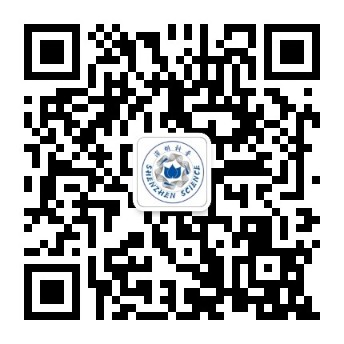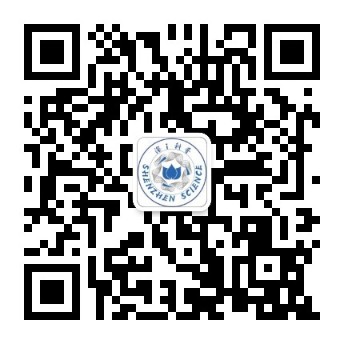音频科普:暗光纤网络有助于勘测地震活动
音频科普:暗光纤网络有助于勘测地震活动
Scientists are exploring the use of fiber-optic cables—like the ones that form the backbone of the internet—to monitor earthquakes.光纤电缆是庞大网络的基础,科学家们也一直在探索它在堪测地震上的应用。
撰文\播音:朱莉娅·罗森(Julia Rosen)
翻译:陈美娟
审校:潘磊
When an earthquake hits or a volcano erupts, scientists traditionally record the shaking using a specially designed instrument called a seismometer. These sensors are extremely sensitive, but they’re also expensive and distributed unevenly around the world. So scientists are working on another strategy to monitor earthquakes: using fiber-optic cables—like the ones that form the backbone of the internet.
当一场地震袭击或是火山喷发来临时,一般,科学家会使用一种叫做地震仪的特制仪器来记录震动情况。这些感受器对震动极为敏感,但同时它们也造价昂贵,在世界各地的分布数量不均。因此科学家们正研究另一种手段来监测地震:利用光纤电缆——很像那些作为互联网基础设施的电缆。
“So the motions are very clear. Specifically, you can see the arrival of different bits of the seismic energy from the location at which the earthquake occurred. So the p wave and the s wave, and the different phases that move out from the site of rupture in the earth, are used by seismologists to locate the event. And so we can detect the important pieces of information above the noise using the fiber-optic cable and then, in that way, the fiber-optic measurement is just as good as a seismometer.”
“震动情况会非常清楚。特别地,你能看到来自不同地震发生点的地震能量是如何汇集的。从地球内部裂点出发的纵波与横波以及传播的不同介质可以被地震学家用来定位灾害事件。而通过光纤电缆探测,我们能去除地震背景干扰获得这些重要信息。这么看,光纤电缆勘测方法和地震仪一样有效。”
Nate Lindsey, a PhD student and seismologist at the University of California, Berkeley. Here’s how it works: the scientists basically take a snapshot of the fiber by shining a laser down it and measuring the photons that bounce back after scattering off of small cracks and impurities in the glass. By doing this tens of thousands of times a second, the researchers can record how the cable deforms as seismic waves pass through it.
Nate Lindsey是加州大学伯克利分校的博士生,也是一名地震学家。它是这样工作的:科学家通过向地底激光照射,测量光子在纤维裂纹和玻璃纤维内部杂质散射后的回弹量——给光纤拍“快照”。通过每秒上百万次的测量,研究者记录下地震波穿过时光纤电缆的变形情况。
So far, Lindsey’ s team has tested the technique in optical fibers they installed themselves in Fairbanks, Alaska, and around the Bay Area. They got promising results. But their ultimate goal is to capitalize on the vast network of unused cables—known as dark fiber—that’s already been installed by telecommunications providers for future use. Dark fiber covers much of the country, and stretches across the ocean basins—which are hard to study using traditional seismometers.
目前,Lindsey的团队正在费尔班克斯、阿拉斯加以及旧金山湾区他们自己搭建起的光纤电缆中测试这项技术。他们得到了不错的结果。他们的最终目标是充分利用庞大的未使用的光纤网络——所谓的暗光纤——通讯公司为未来使用预铺设了大片。暗光纤覆盖了国家大部分地区,而且线路通过洋盆——是用传统方法难以勘测的区域。
“To put the same sensor near a volcano that occurs offshore requires infrastructure to deploy the sensor, like a big boat. It also requires a tethered cable, a battery. The sensor has to be waterproof, obviously. It’s also very corrosive underneath the ocean, and so there’s been a limitation of our ability to study offshore volcanoes. Similarly faults. Earthquake processes are understood based on faults that are on land.”
“要想将相同的探测器放置在近海的火山附近,需要能放置探测器的基础设施,比如一条大船。这还需要用绳固定的电缆和电池。探测器必须是防水的。海水环境腐蚀作用很强,所以我们研究近海火山活动有种种限制。同样地质断层研究也有很多限制。而地震过程的理解基于陆上断层相关研究。
Offshore cables could also improve earthquake early warning systems in places like the Pacific Northwest, where big, dangerous earthquakes actually occur under the ocean.
近海电缆还可能改进地震预警系统,例如在太平洋西北岸处,大规模严重的地震实际上都发生于海底。
“We can record that earthquake more quickly and then provide a warning that much quicker. So it might be a second or two seconds more that this fiber-optic technology provides.”
“我们可以更快地记录地震活动,然后更快地提供地震预警。这种光纤电缆技术能够给我们珍贵的一到两秒钟。”
Lindsey is presenting his work this week at the fall meeting of the American Geophysical Union in New Orleans. The results were also published recently in Geophysical Research Letters. If the technique proves reliable, Lindsey says it could usher in a whole new way of studying earthquakes and volcanoes. All that dark fiber may shed light on the Earth beneath our feet.
在于新奥尔良召开的“美国地球物理学联合会”秋季会议上,Lindsey展示了他的研究成果。这项研究成果最近被刊登在了《地球物理研究快报》上。一旦这项技术被证实是可靠的,Lindsey认为这引领一种对地震与火山活动的全新研究方式。暗光纤将揭开我们脚下地球的奥秘。
注释:Dark fiber,国外的专业术语直译为“暗光纤” ,国内习惯称之为“裸光纤” ,即在管道中尚未被传输或数据设备点亮的光纤。
关注【深圳科普】微信公众号,在对话框:
回复【最新活动】,了解近期科普活动
回复【科普行】,了解最新深圳科普行活动
回复【研学营】,了解最新科普研学营
回复【科普课堂】,了解最新科普课堂
回复【科普书籍】,了解最新科普书籍
回复【团体定制】,了解最新团体定制活动
回复【科普基地】,了解深圳科普基地详情
回复【观鸟知识】,学习观鸟相关科普知识
回复【博物学院】,了解更多博物学院活动详情
Scientists are exploring the use of fiber-optic cables—like the ones that form the backbone of the internet—to monitor earthquakes.光纤电缆是庞大网络的基础,科学家们也一直在探索它在堪测地震上的应用。
撰文\播音:朱莉娅·罗森(Julia Rosen)
翻译:陈美娟
审校:潘磊
When an earthquake hits or a volcano erupts, scientists traditionally record the shaking using a specially designed instrument called a seismometer. These sensors are extremely sensitive, but they’re also expensive and distributed unevenly around the world. So scientists are working on another strategy to monitor earthquakes: using fiber-optic cables—like the ones that form the backbone of the internet.
当一场地震袭击或是火山喷发来临时,一般,科学家会使用一种叫做地震仪的特制仪器来记录震动情况。这些感受器对震动极为敏感,但同时它们也造价昂贵,在世界各地的分布数量不均。因此科学家们正研究另一种手段来监测地震:利用光纤电缆——很像那些作为互联网基础设施的电缆。
“So the motions are very clear. Specifically, you can see the arrival of different bits of the seismic energy from the location at which the earthquake occurred. So the p wave and the s wave, and the different phases that move out from the site of rupture in the earth, are used by seismologists to locate the event. And so we can detect the important pieces of information above the noise using the fiber-optic cable and then, in that way, the fiber-optic measurement is just as good as a seismometer.”
“震动情况会非常清楚。特别地,你能看到来自不同地震发生点的地震能量是如何汇集的。从地球内部裂点出发的纵波与横波以及传播的不同介质可以被地震学家用来定位灾害事件。而通过光纤电缆探测,我们能去除地震背景干扰获得这些重要信息。这么看,光纤电缆勘测方法和地震仪一样有效。”
Nate Lindsey, a PhD student and seismologist at the University of California, Berkeley. Here’s how it works: the scientists basically take a snapshot of the fiber by shining a laser down it and measuring the photons that bounce back after scattering off of small cracks and impurities in the glass. By doing this tens of thousands of times a second, the researchers can record how the cable deforms as seismic waves pass through it.
Nate Lindsey是加州大学伯克利分校的博士生,也是一名地震学家。它是这样工作的:科学家通过向地底激光照射,测量光子在纤维裂纹和玻璃纤维内部杂质散射后的回弹量——给光纤拍“快照”。通过每秒上百万次的测量,研究者记录下地震波穿过时光纤电缆的变形情况。
So far, Lindsey’ s team has tested the technique in optical fibers they installed themselves in Fairbanks, Alaska, and around the Bay Area. They got promising results. But their ultimate goal is to capitalize on the vast network of unused cables—known as dark fiber—that’s already been installed by telecommunications providers for future use. Dark fiber covers much of the country, and stretches across the ocean basins—which are hard to study using traditional seismometers.
目前,Lindsey的团队正在费尔班克斯、阿拉斯加以及旧金山湾区他们自己搭建起的光纤电缆中测试这项技术。他们得到了不错的结果。他们的最终目标是充分利用庞大的未使用的光纤网络——所谓的暗光纤——通讯公司为未来使用预铺设了大片。暗光纤覆盖了国家大部分地区,而且线路通过洋盆——是用传统方法难以勘测的区域。
“To put the same sensor near a volcano that occurs offshore requires infrastructure to deploy the sensor, like a big boat. It also requires a tethered cable, a battery. The sensor has to be waterproof, obviously. It’s also very corrosive underneath the ocean, and so there’s been a limitation of our ability to study offshore volcanoes. Similarly faults. Earthquake processes are understood based on faults that are on land.”
“要想将相同的探测器放置在近海的火山附近,需要能放置探测器的基础设施,比如一条大船。这还需要用绳固定的电缆和电池。探测器必须是防水的。海水环境腐蚀作用很强,所以我们研究近海火山活动有种种限制。同样地质断层研究也有很多限制。而地震过程的理解基于陆上断层相关研究。
Offshore cables could also improve earthquake early warning systems in places like the Pacific Northwest, where big, dangerous earthquakes actually occur under the ocean.
近海电缆还可能改进地震预警系统,例如在太平洋西北岸处,大规模严重的地震实际上都发生于海底。
“We can record that earthquake more quickly and then provide a warning that much quicker. So it might be a second or two seconds more that this fiber-optic technology provides.”
“我们可以更快地记录地震活动,然后更快地提供地震预警。这种光纤电缆技术能够给我们珍贵的一到两秒钟。”
Lindsey is presenting his work this week at the fall meeting of the American Geophysical Union in New Orleans. The results were also published recently in Geophysical Research Letters. If the technique proves reliable, Lindsey says it could usher in a whole new way of studying earthquakes and volcanoes. All that dark fiber may shed light on the Earth beneath our feet.
在于新奥尔良召开的“美国地球物理学联合会”秋季会议上,Lindsey展示了他的研究成果。这项研究成果最近被刊登在了《地球物理研究快报》上。一旦这项技术被证实是可靠的,Lindsey认为这引领一种对地震与火山活动的全新研究方式。暗光纤将揭开我们脚下地球的奥秘。
注释:Dark fiber,国外的专业术语直译为“暗光纤” ,国内习惯称之为“裸光纤” ,即在管道中尚未被传输或数据设备点亮的光纤。
关注【深圳科普】微信公众号,在对话框:
回复【最新活动】,了解近期科普活动
回复【科普行】,了解最新深圳科普行活动
回复【研学营】,了解最新科普研学营
回复【科普课堂】,了解最新科普课堂
回复【科普书籍】,了解最新科普书籍
回复【团体定制】,了解最新团体定制活动
回复【科普基地】,了解深圳科普基地详情
回复【观鸟知识】,学习观鸟相关科普知识
回复【博物学院】,了解更多博物学院活动详情

做科普,我们是认真的!
扫描关注深i科普公众号
加入科普活动群

- 参加最新科普活动
- 认识科普小朋友
- 成为科学小记者
上一篇:音频科普:鸟类共享预警信号
 会员登录
会员登录

























